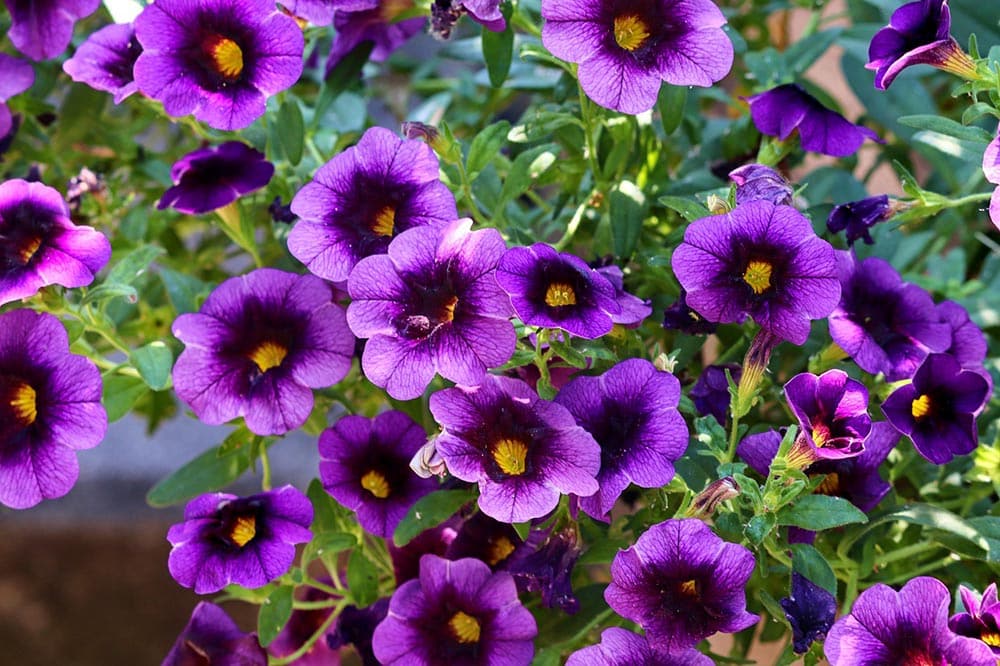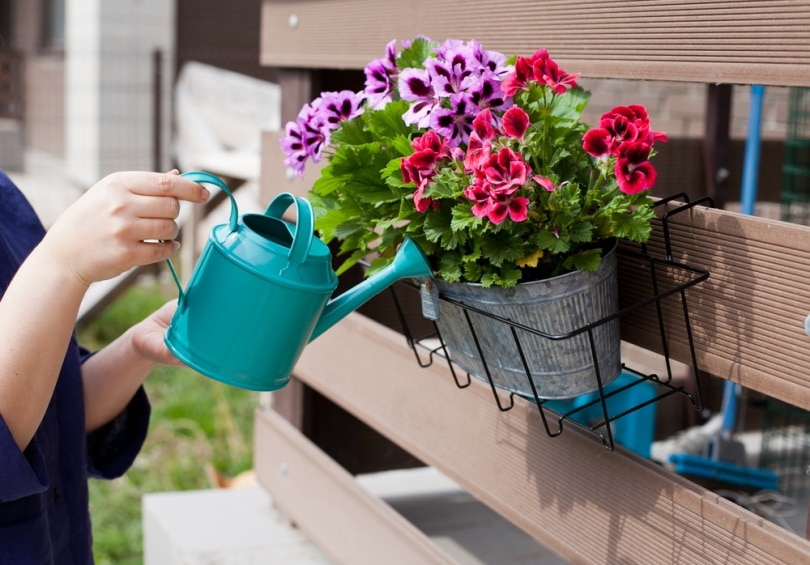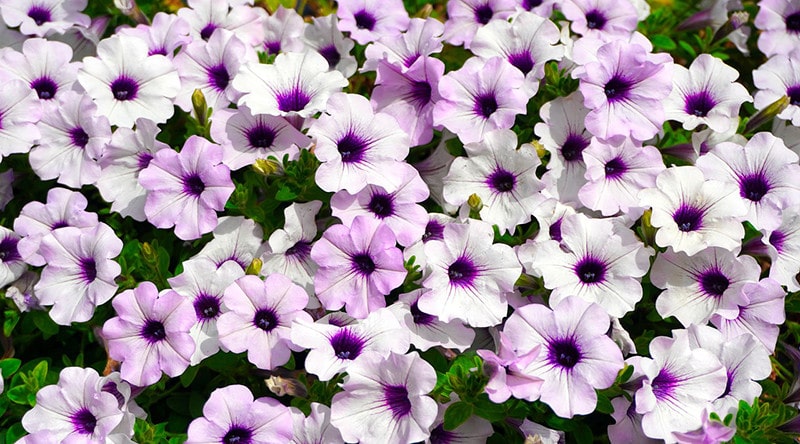How Much & How Often to Water Petunias? Care Facts & Tips
-
Jana Blagojevic
- Last updated:

Petunias are one of the gardeners’ favorite plants for growing, especially because of their many gorgeous colors that bring life to any garden. Petunias are unique flowers with various colors and dark veins running across the gentle petals. They are usually the centerpiece of a garden, planted around borders and edges or in containers. Caring for petunias is a straightforward task once you learn how to. Petunias need thorough watering to establish a robust root system, which is why they must be watered frequently, especially during warmer months. They adore water but are very drought-tolerant.
How Much Water Do Petunias Need
Watering petunias is pretty straightforward. Creating a balanced watering schedule is essential to provide your petunias with just enough water. Water the plant generously until the excess begins seeping through the draining holes. Avoid overwatering your petunias to prevent causing root rot.
If possible, water the soil without wetting the leaves and prevent constantly soggy soil. If the soil is continuously overwatered, it can lead to fungal infections. To ensure you provide your plants with the right amount of water, it is best to wait until the top inch of the soil is dry, which you can check by sticking your finger in it. Those bedded petunias must have dry soil the first 5 to 6 inches before watering.
Watering petunias thoroughly improves root development and establishes deep root growth so that roots can draw water from the soil in the future when needed. If you water lightly, the roots will develop in the shallow layers, limiting their access to water.

How Often To Water Petunias
Since petunias prefer to be grown in direct sunlight, they need watering frequently. It is advisable to water petunias daily during hot summer times. You can even water petunias twice daily during more extreme heat waves. When the plant doesn’t get enough sunlight, it is best to water it thoroughly in the morning and give it a week before the next watering. While petunias are very tolerant of droughts, they are not big fans of soggy soil, so it is always better to let the soil dry before you water the plant again.
If you are growing petunias in hanging baskets, water them generously once a week for the best results. These baskets usually have excellent drainage and airflow, which is something your petunias will enjoy. You can water your plants during heat waves every second or third day. If you grow petunias in the garden soil, it would be best to water them thoroughly once a week to promote healthy root development and avoid root rot at the same time.
Petunias Characteristics
| Botanical name: | Petunia |
| Common names: | Petunia |
| Plant type: | Annual |
| Bloom color: | Blue, orange, pink, red, white, yellow, purple |
| Height: | 6–12 inches |
| Spread: | 1–4 feet |
| USDA Hardiness zones: | Zones 10 to 11 |
| Soil type: | Light, well-drained, sandy soil |
| Soil pH: | Acidic |
| Sun requirement: | Full sun, partial shade |
Appearance
Petunias are one of the most popular and widely adored flowers among garden enthusiasts. Their foliage is branching and hairy, growing single or double blooms. The gorgeous trumpet-like flowers can have smooth or ruffled petals, often in multiple colors, with dark veins across the surface. The flowers are gentle and soft, usually carrying a particular fragrance. Petunias bloom from spring until the frost. Because of their beauty, they are often grown in garden beds and borders and can even be planted in hanging baskets or containers.

Types
There are several types of petunias, differing in size and appearance. Based on these distinctive features, petunias can be divided into five groups.
- Multiflora: This type of petunia is the most durable, having a high tolerance for wet conditions. They are ideal for summer conditions, producing smaller flowers.
- Grandiflora: These petunias grow large flowers, although they struggle in harsher conditions. They are not as tolerant of hot and humid environments, although their size and beauty make them perfect for baskets and containers.
- Floribunda: The floribunda petunias grow medium-sized flowers and, with their features, fall between the multiflora and grandiflora groups.
- Milliflora: Millifloras are the smallest type of petunias available. The flowers are quite small, although they grow in abundance and are long-lasting.
- Spreading/trailing petunias: These petunias differ from the rest because they tend to grow very low to the ground, spreading in width. They can be excellent as a ground cover, as a colorful carpet-like plant, or hanging from containers and baskets.

Common risks
Some most common pests that attack petunias frequently are slugs, snails, and aphids. These pests feed on the leaves or their excretion, leaving them yellow, distorted, and damaged. Dealing with the invaders may require time and patience, but it can be done quickly.
- Slugs/snails solution: Handpick them and apply a 1-inch layer of diatomaceous earth. Avoid watering your petunias overhead.
- Aphid solution: Remove thoroughly with strong water pressure and spray insecticidal soap. Use slow-release fertilizer in the future, and introduce predator insects to restore balance in the garden.
Conclusion
After reading about petunias and ways to care for them, you can begin growing your thriving plants. Petunias need plenty of water to stay healthy and satisfied, although they are very tolerant of certain conditions and will survive even during dry times. With the proper watering habits established, your petunias will grow better than ever, rewarding you with their breathtaking flowers.
Related Reads:
- How Much and How Often to Water Palm Plant
- How Much and How Often to Water Cucumbers
- How Much and How Often to Water a Bromeliad Plant?
- How Much and How Often to Water Rubber Plants
Featured Image Credit: manfredrichter, Pixabay
Contents
